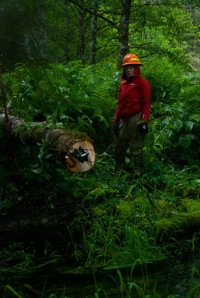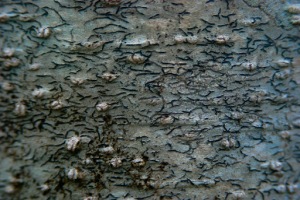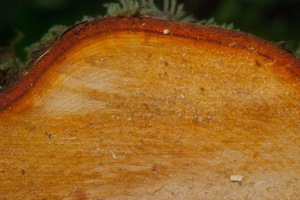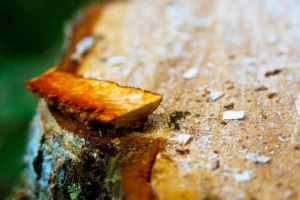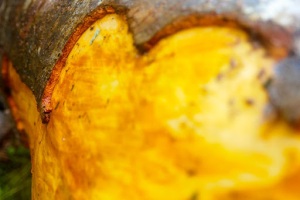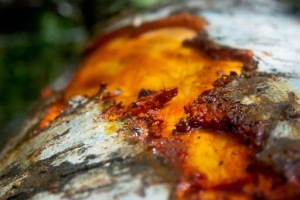Blowing **** up in the woods, Part 1
Explosives look like sausages. Sausages that come in fifty pound boxes and convert sections of road into little valleys for streams to run through. Sausages that are not filled with meat, but something that looks a bit like vanilla frosting. Sausages that are used, as one of the blasters said, to kill culverts.
First, you get your explosives a few miles up an overgrown ex-logging road. This involves a helicopter. Then you get yourself up there, too. This involves your legs, but might involve an ATV to carry your backpack partway.
Then, at your site, you lay out your string of sausages, like so.
 |
|||
| Mmm, sausages… |
Then, you tape them together with detonating cord (the purple stuff you see on the spool above). Each sausage, aka ‘chub,’ needs to have intimate contact with either the det cord or another chub, to make sure it all explodes together.
 |
| Taping up chubs |
Once that’s set, you move on to the next site. For efficiency, you set up 3-6 shots to go off at the same time.
 |
| The blasters keep careful notes on each shot. |
Then, you go back and load each string into the culverts. The culverts range from 18 to 48 inches in diameter. For the smaller ones, you can send a rope through and then pull the string. For a 24 inch culvert, you can send in an intern.
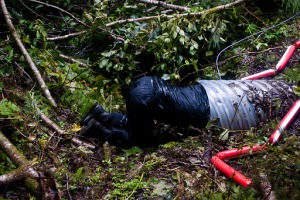 |
| Elizabeast! My fearless intern. |
For a 48 inch culvert, even a fish and wildlife biologist will fit.
 |
| A full grown biologist can be over 6 feet tall! |
 |
| Feeding python into the pipe. |
When there are a few shots all set up, the blasters string them together with a thin yellow plastic tubing coated inside with an explosive powder. The tubing is called shock cord, and they unspool 1200 feet of it, to make sure they’re setting the explosions off from a safe distance. To be doubly safe, everyone takes cover behind the larger trees.
Just so you know, this is what the road looks like before anything explodes.
Tune in next time for the after view….

